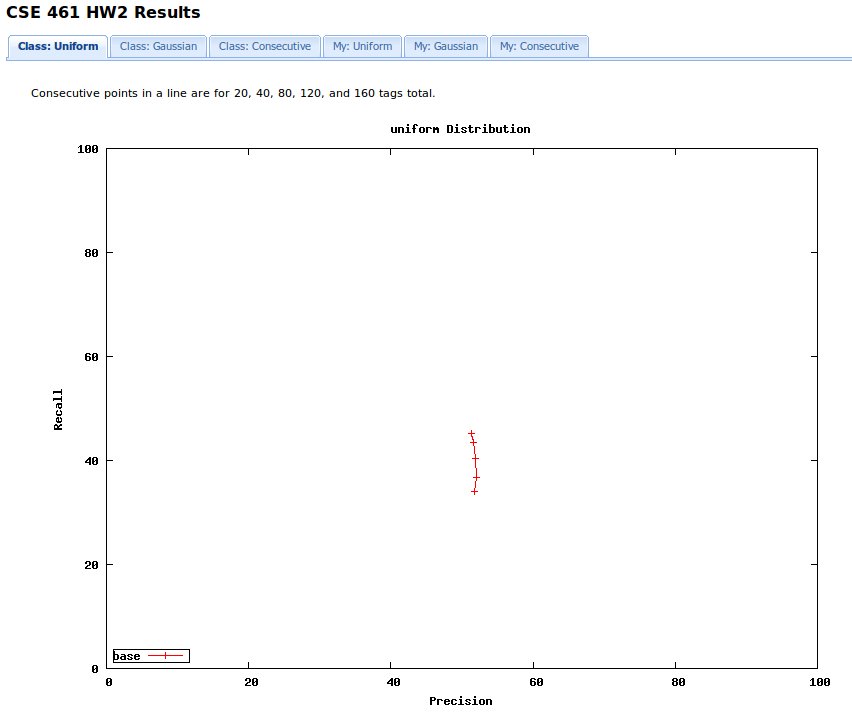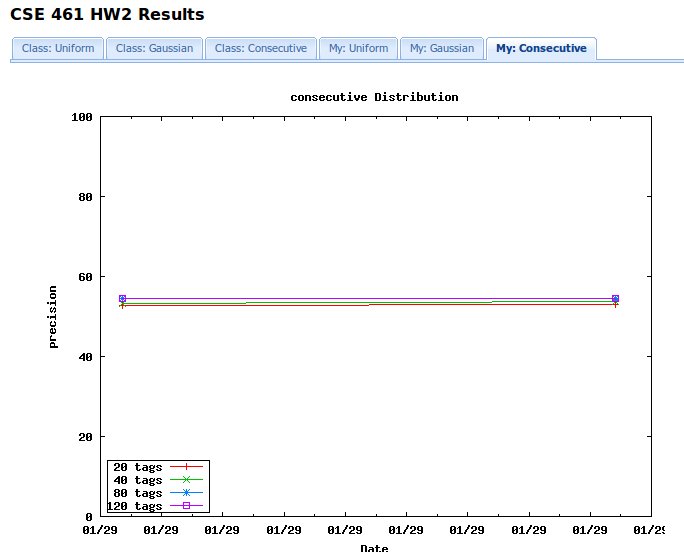|
|
|

|
|
Homework 2: Collaborative Graphing
These tools have been tested only with Firefox 3.5. They require
that Javascript be enabled. They may, or may not, work with other
browsers. (They also require bash, perl, and wget.)
There are web-based tools that can graph the results of your experiments.
Use of these tools is entirely optional.
The basic idea is this:
- You run a script,
stdrun.sh, that is provided with the source distribution.
- It runs your simulator with a set of standard inputs: number of tags, BER, etc.
- When it's done, it sends the results to a web server.
- The server stuffs the results of your run in a database.
- The server also produces a new set of graphs, based on the recent data.
- You can view the results graphs on a web page.
- So can everyone else.
The results page has two uses. First, the most recent results
for everyone participating (by having sent data to the server) are shown to everyone
who views the page. That way, you can see how your results compare to others in the class.

Second, the page displays the results of your simulator runs (those performed using stdrun.sh)
over time. That way you can track whether things are getting better, and by how much.

Setup
Here's what you need to do to use this.
Note that you are never asked to put your cse login password in any file nor to type it into
any web page by any of these tools. You will have to perform normal csenetid authentication to the web server, though.
Create a screen name
Visit this page
to create a screen name and password.
You visit this page once, and you're done with it.
Edit stdrun.sh
Replace the string 'xxx' in two places in stdrun.sh.
In one instance, supply your csenetid (i.e., not your screen name), and in the other
your screen name password (i.e., not your cse login password).
These occur near the top of the file, just below a large comment explaining just what to do.
You do this once, and you're done with it.
Run stdrun.sh
Run stdrun.sh whenever you want to upload new experiment results to the server.
(If you don't want to upload, just run the simulator from the command line.)
Note that it takes some minutes for that script to finish.
The invocation syntax is
./stdrun.sh <distn list>
The distn list is a (space separated) list of EPC distribution
specifiers. (These determine how the EPC numbers for the tags are
chosen.) At least one of uniform, consecutive, and
gaussian must be given. You can specify up to all three;
in fact, doing so is what is expected by the graphing pages on the web server.
(If you never enter any data for one of the distributions, your personal page
for that distribution will show the "no image" icon rather than an empty graph.)
Visit the results page
The results page is here.
You can view it only if you have created a screen name and have uploaded data.
You'll see a page with tabs. The first three show you the latest results for everyone who has uploaded data.
Screen names are used to label the data.
The next three tabs show you your results, plotted against time. Only you can see these graphs.
Please note that this facility is new. Even if it's bug free, I'm apprehensive that 60 functions plotted on a single
graph might turn out not to be the best idea ever. The upshot is that the exact format of what is displayed may
change, without warning, as we see how it's going. The other upshot is that you should send suggestions about
what alternative ways of displaying the data might be of use to you. (Those may or may not be implemented, because
of time constraints.)
|



